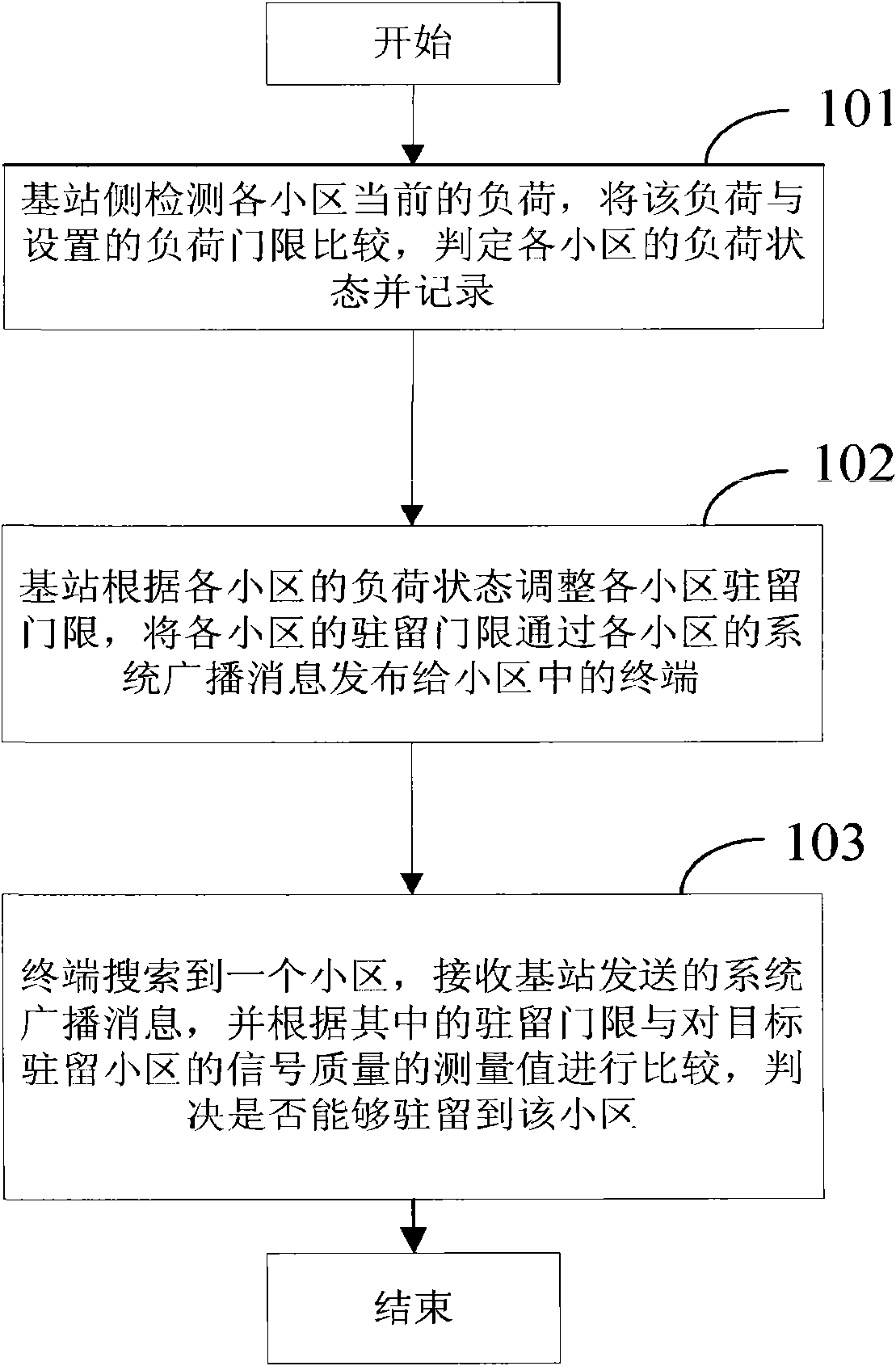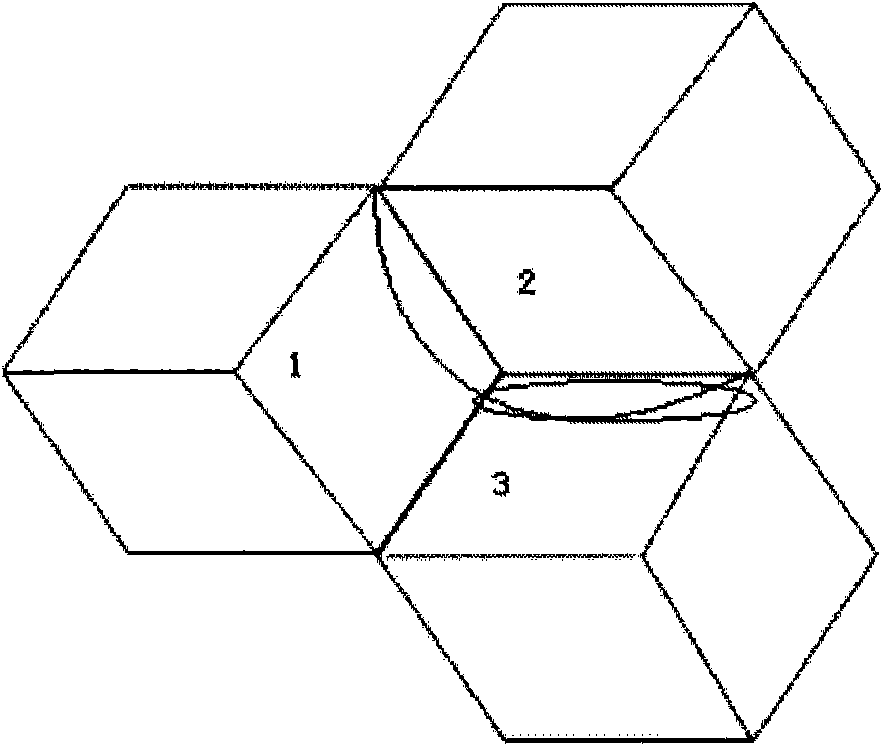Method and system for dynamically balancing cell load in wireless network
A wireless network and dynamic balancing technology, applied in the field of mobile communication, can solve problems such as dropped calls, increased cell interference, and user terminal impact
- Summary
- Abstract
- Description
- Claims
- Application Information
AI Technical Summary
Problems solved by technology
Method used
Image
Examples
no. 1 example
[0093] Aiming at the problem of user terminal access and handover failure caused by the unbalanced load between cells in the wireless network, especially for the uneven load between cells in the LTE (Long Term Evolution) OFDMA (Orthogonal Frequency Division Multiple Access) system in the communication field To solve the problem of user terminal access and handover failure caused by balancing, an embodiment of the present invention proposes a method for dynamically balancing cell loads in a wireless network (such as figure 1 shown), the specific steps are as follows:
[0094] Step 101, the base station side detects the current load of each cell, compares the load with the set load threshold, determines and records the load state of each cell;
[0095] Here, the load states of a cell can be divided into three types: a full load state (T-fullload), a high load state (T-highload), and a low load state (T-lowload).
[0096] The load status of the cell can be judged by the set load...
no. 2 example
[0116] In the method for dynamically balancing the load of cells in a wireless network in this embodiment, the first step is the same as the above step 101, and the base station side detects the current load of each cell, compares the load with the set load threshold, and determines the load of each cell status and record. But the next steps are:
[0117] In the second step, the base station publishes the load status information of each cell to the terminals in the cell through the system broadcast message of each cell;
[0118] In the third step, in the process of cell selection or reselection, the terminal performs offset processing on the measured value of the signal quality of the target camping cell according to the cell load status in the system broadcast message, and uses the offset measured value to be compared with each target camping cell. The camping threshold of the remaining cell is compared, and the camping decision is made.
[0119] If the system broadcast mes...
no. 3 example
[0134] This embodiment is mainly aimed at the scenario of cell reselection, and simultaneously corrects the camping threshold of the cell and the measured value of the signal quality according to the load situation. The steps are as follows:
[0135] Step A, the base station side detects the current load of each cell, compares the load with the set load threshold, determines and records the load state of each cell;
[0136] Step B, the base station adjusts the camping threshold of each cell according to the load state of each cell, and publishes the camping threshold of each cell to the terminals in the cell through a system broadcast message of each cell;
[0137] The above two steps are the same as the first embodiment, and the specific processing can refer to the first embodiment
[0138] Step C, in the process of cell reselection, the terminal performs offset processing on the measured value of the signal quality of the adjacent cell according to the current camping cell ...
PUM
 Login to View More
Login to View More Abstract
Description
Claims
Application Information
 Login to View More
Login to View More - R&D
- Intellectual Property
- Life Sciences
- Materials
- Tech Scout
- Unparalleled Data Quality
- Higher Quality Content
- 60% Fewer Hallucinations
Browse by: Latest US Patents, China's latest patents, Technical Efficacy Thesaurus, Application Domain, Technology Topic, Popular Technical Reports.
© 2025 PatSnap. All rights reserved.Legal|Privacy policy|Modern Slavery Act Transparency Statement|Sitemap|About US| Contact US: help@patsnap.com



